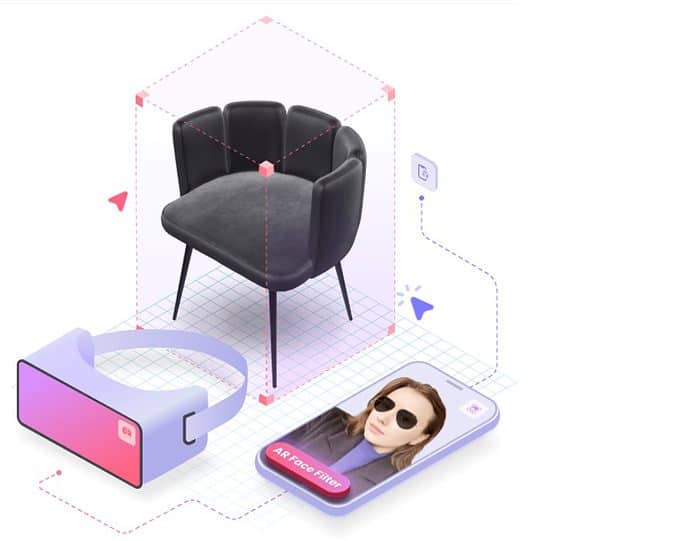
About Legitary GmbH
- Founders: Dr. Peter Filzmoser (VP Technology), DIin Nermina Mumic B. Sc. (CEO), Günter Loibl (VP Business Development)
- Founded in: 2019
- Employees: 8
- Money raised: Förderungen von Austria Wirtschaftsservice (AWS), Wirtschaftsagentur Wien, Österreichische Forschungsförderungsgesellschaft (FFG); Umsätze: k.A.
- Ultimate goal: Faire Vergütung im Musikstreaming
With music subscription services like Spotify, music streaming has become one of the most important distribution channels in the music industry. The market is growing, and with it, the amount of data. A side effect is that the settlements with the music rights owners are hardly manageable for audit companies. The start-up Legitary, a spin-off of the Vienna University of Technology, has a solution to the problem. Music expert Günter Loibl, who has been in the music industry for 30 years, came up with the idea. He inspired the statistics expert Dr. Peter Filzmoser from the Vienna University of Technology with his idea and the latter with his doctoral student Nermina Mumic. The technical mathematician immediately provided the basis for the start-up with the first paper of her doctorate. She is now CEO.
In this episode of the Start-up-of-the-Day series, Nermina talks about her innovation and the challenges of starting up.

What motivates you guys?
We want to bring more transparency and fairness to music streaming. With Legitary, we can give artists and rights holders tools to a) determine the value of their music rights and b) check quickly and efficiently if they have been billed correctly.
What makes billing for music streaming so difficult?
Every day on platforms such as YouTube, Spotify, and Apple, billions of streams are played. Specific to the market is a very long billing chain: the music platforms report to the distributor, the distributor to the label, the label to the management, and the management to the artist. At each of these interfaces, there can be technical problems – not yet deliberate – in data processing. Therefore, everyone in this billing chain has an interest in checking whether the previous instance has billed correctly. But so far, they’ve just had to trust. Rights holders have been particularly affected by this issue, left in the dark as to whether they are getting all the royalties they are entitled to and at what prices they can trade their music rights.
How do you solve this problem?
We have developed an algorithm that scans the billions of streams from the various streaming services and thus enables transparent billing. One of our greatest strengths is estimating the values of music rights. To do this, we normalize the data sets by cleaning them of events unlikely to be repeated – the so-called anomalies.
By anomalies, we mean, for example, a hit that has gone viral, missing billings, or outliers that can be attributed to specific events. But it could also be an indication of fraudulent music streaming activity. Behind this are streaming farms that use bots to stream certain tracks around the clock.
To do this, you also need to understand the business model of streaming services. For example, they have a pot of revenue that is filled with advertising or subscription revenue. The content is then divided aliquot among all music streams. This means that the more streamed, the higher the billing. That’s why there are always attempts to drive up the number of streams through these bots.
To rule out the anomalies I just mentioned, we normalize the data volumes to obtain a database that provides a robust estimate of future revenues – and thus the current value of music rights. This enables rights holders to make appropriate economic use of them.
Nermina Mumic explains the principle of Legitary © TU Wien Innovation Incubation Center – TUW 12c
Who are your potential customers – and how can you use the technology?
Currently, we work mainly business-to-business. That means our customers are music labels, distributors, collecting societies, publishers, and auditing companies. They get an app that allows them to see the analytics. But they can also move to a software-as-a-service model and get continuous analytics from us on settlements.
Among other things, we offer a health check that quickly shows problem areas in the catalog. You can see, for example, in which regions and for which streaming services and titles there are deviations. This allows our customers to assess whether the deviations are in a range that is negligible or not.
What was the biggest obstacle you had to overcome?
There are many potential obstacles in the start-up space. But many start-ups face a challenge: finding the right product/market fit. Figuring out where you can provide the most value to your target audience. This requires many feedback loops and appropriate product alignment.
We were challenged to understand the problems in data processing and where we could get the most leverage for our customers.
What have been the best moments so far?
It’s great to get feedback from happy customers. When they experience how much efficiency they gain in their daily work, how much information the analyses provide, and how this makes their work easier.
How has the financing worked out?
So far, we have financed ourselves through grants and sales. But we have a very high demand and therefore see the need to grow. That’s why the topic is becoming increasingly relevant.
Where would you like to be with your company in five years?
We want to create new standards in music streaming. Standards for transparent billing and fair data-driven valuations of music rights.
What makes your innovation better or different than existing things?
Until now, it took an auditor up to 300 hours to bill an album, which is 7 ½ weeks. We manage to do it within a few minutes. So we bring a lot of efficiency to the process.
In terms of competition, our approach is much broader. For example, the software is already geared toward finding fake plays. On the other hand, we are looking for anomalies in music streaming in general and offer the possibility of rating.
Furthermore, we also differentiate ourselves from existing music rights rating software by cleaning up the history and subtracting anomalies. This allows us to arrive at much more robust estimates.

